Artists, Curators & Directors
 Biography
Biography
I was born in 1989, a year historically associated with the fall of the Berlin Wall. But this was also the year that Colombia suffered the strongest wave of terrorist attacks in recent history. Medellín, my city, was in many cases the epicenter of the violence. I am the second child of a female head of household. My mother is a hardworking, brave and fearless woman who day after day endured, working long hours to ensure her family’s welfare. Despite living in the Comuna 3, a territory where militias (a group of rebel citizens alienated from the state, with no coherent political philosophy), imposed outdoor curfews. My mom defied the curfew: She left the house at 4:00 a.m. and returned around 10:00 p.m., after a roundtrip commute to and from work of nearly six hours.
In my neighborhood, militias sustained violent clashes with those from other neighborhoods in the same district. This was a place punctuated by the common social problems in my country at large: an eternal dispute over control of territory and micro traffic, a place where children were perceived as potential militants and an area where, when I was three years old, a militiaman taught me about his gun and invited me to take it.
It was around 1993 when the rules of the game changed. Militia fighters from my neighborhood were killed and with this, other criminals took control. Clearly this did not entail a positive change. The dispute intensified. Crime rose. There were threats to families, and then, their forced exile. The turning point for my family arrived later that year, coinciding with the death of Pablo Escobar, which was a peak moment of social upheaval. Leaving everything behind and starting from scratch, my mother chose to move to a small town south of Medellín. This was a special place because it combined an urban lifestyle with a largely rural environment that was somehow distanced from the severity of problems we lived through in the city. This is where I grew up, surrounded by nature, swimming in the creek, hunting crabs, exploring natural landscapes, motivated by the exciting readings I shared with my sister in the evenings and inspired by painting and drawing.
I am not an artist. I am a student of architecture. But I do not feel I am a conventional architect now that I live in a continuous dichotomy between country and city. I negotiate urban concerns, but also rural ones at the same time. Disappointed with the high rate of construction and the lack of commitment to our environment, I am indebted to the landscapes that allowed me, as a child, to walk away and be distanced from the violence and conflict. Today I concentrate my efforts on projects that integrate urban planning, resource management and the arts to find solutions to a problem that seems to be forgotten by architecture: water resources.
Project Statement Photography • Maps • Video • Public Performance • Ethnography • Urban Planning
Historia Gráfica y Patrimonio: Río Medellín
The Medellín River: A Graphic and Heritage History
Colombia is rich in water, but paradoxically, only 15 percent of this resource is located in the Andean region, where 80 percent of the country’s population lives. In a cloud forest in the Andean Mountains, the River Medellín is born. That is where Caldas, the suburban municipality of Medellín, is located. Caldas has one of the highest annual rainfall levels of any Colombian municipality. It rains so hard that its inhabitants fondly call rainstorms “broken skies” and they celebrate annual festivals called “the party of rain.” But there are problems there. The city doesn’t see its water as a rich resource and, since its inception, Caldas has turned its back on the river. Practices such as agriculture and uncontrolled tourism threaten this water resource. This is my case study: I am creating a graphic chart of the river’s pathway parallel with current and historical photographs. This reveals the drastic reduction in the river’s water levels and flows parallel with the rise of urbanization. I also engage with the “rain parties” as a platform to do public performances, which I also document in video. These performances and documentary are an identity exercise intended to sensitize residents to their water resource, which in turn is intended to help them later create a water resource management plan. Let us ask for a second what will happen to our cities if this problem of increasing water scarcity is not remedied. Will we move cities? Will we move to rural areas, many of which suffer from poverty and a lack of infrastructure? Colombia, my country, is changing. My country is not just a synonym for violence; it is synonymous with diversity and natural resources. Colombia is one of the world’s most biodiverse countries. I am confident that through strategies like my project, we can also develop populations that are socially, environmentally and economically sustainable.
Julio Cesar Bedoya
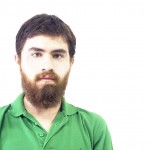 Project Statement Photography • Video • Public Performance • Ethnography
Project Statement Photography • Video • Public Performance • Ethnography
Altares para la muerte: esteticas populares
Altars for The Dead: Popular Aesthetics
This project seeks to understand different aesthetics of death in the city’s cemeteries, where these aesthetics come from, and to what, iconographically, they respond. Graves or vaults are formulated in the style and spirit of altars, where the mourners form the relationships that they still have with their dead. They pay their respects in such a way that they consecrate the mourner who becomes a figure of devotion. All of these relationships develop a series of their own cemetery dynamics and define moments in the process of grieving. At the same, a few spatial qualities emerge from the cemetery landscape that architecture tries to understand.
José Alexander Caicedo Castaño
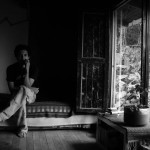 Biography
Biography
I graduated with a degree in fine arts at the Universidad Nacional de Colombia in Medellín in 2012. In 2010, I also participated in a research project called “Categories of Impact Generated by Mobility Projects in Urban Infrastructure From Residential Zones.” This project was with the Escuela de Hábitat at the Universidad Nacional de Colombia in Medellín’s Department of Architecture. Hábitat combines the study of urban housing with that of the surrounding social and economic environment. For the last several years, I have intertwined my artistic and academic projects to understand social, economic and spatial relationships where I live, in the district in Medellín called Comuna Ocho. For the last three years, I have worked as an assistant in the graduate program, teaching technology and engineering. In 2012, I also participated in an artistic and public space intervention in Comuna Ocho in the Molino neighborhood called “Medellín Paints Life.” I worked with the EDU (Urban Development Company), which works through the Mayor’s Office in Medellín. I was an invited artist to Laboratorio 38 with my project “Renewable Energy Mitigation in Climate Change” in the Gallery Paul Bardwell at the Center Colombia Americano in Medellín in 2013. I am the cultural coordinator of an artistic and spatial intervention project in public space called “Solidarity Expansion.” I collaborate on this project with community members from the Pinares de Oriente neighborhood of Comuna 8. Currently, I am a Master’s student in Hábitat. My thesis is entitled “Bearing the Burden: Aesthetic imaginaries of women displaced by conflict in the Comuna Ocho neighborhood of Medellín.”
Project Statement Photography • Maps • Video • Public Performance • Ethnography • Sound
Bearing the Burden: Aesthetic Imaginaries of the Woman Victim of Territorial Conflict in Medellín’s Comuna Ocho Neighborhood
Imaginarios esteticos de la mujer victima por conflicto territorial en la comuna ocho de Medellín: Cargando la Carga
Pinares de Oriente is a human settlement, situated on the mountain ridge Pan de Azúcar in the city of Medellin. This place is high risk because of the possibility of tropical rain-induced landslides and the vulnerability of being far up, isolated from the city center and its resources down below. Between 1940 and 1950, many families or individuals have self-settled in the neighborhoods of Comuna Nororiental. They came because they were displaced, forced to flee their rural towns due to violence. From the mid-1960s to the mid-1990s, the armed conflict in Colombia caused massive migration of the nation’s population. The largest number of displaced people are from rural areas of Colombia. The process of displacement creates a transition between a rural society and an urban society. People also engage in an aesthetic process of transition, forming productive, interconnected roots like that of an orchard, a rhizome.
Because people must occupy the land illegally, the neighborhoods and their residents have an anonymous quality. That is, they know they are not supposed to live there, according to the law—yet they have no other place to go. In these neighborhoods, women have a leading role in this rural-urban transition, weaving social imaginaries, remaining adaptable and staying in a hostile territory. At the same time, it is a promise of continuing in one’s own habitat, one’s own home. It is a meaningful mixture of what they left behind in their rural life, including growing their own food, and the new goals of including themselves as productive individuals of community life that the City of Medellin demands.
As Tamera Marko has written about my work:
This is about much more than plantains. This is not just about being forced to flee one’s territory, to move in terror form one plot of land to another. This is about what people can do with the land they are actually living on, in their effort to re-settle. Criminalizing and burning the women’s plantain crops adds ongoing dimensions of displacement within their displacement. The women become displaced from their new land in a way that presents them from sustaining their own nutritive, culinary and cultural citizenship. At the same time, they are also displaced from larger systems of everyday belonging in the cultural citizenship of their nation as a whole. People throughout Colombia eat plantains as a staple in one or more daily meals.
As Charles Taylor says, people create or invent their social imaginaries through images, stories and legends, which serve as a way to perform their social environment. In other words, people share a collective conception that makes possible common practices and establishes a feeling of widely-shared legitimacy. This image enriches and modifies our way of communicating with other people, who are related in some way with us.
Luisa Fernanda Cárdenas Zapata
 Biography
Biography
I am a superheroine from Comuna 6 in the City of Medellín.
Project Statement Photography • Ethnography & Autoethnography • Narrative
Feminidad: Las Super Heroinas de Comuna 6
Feminity: Superheroines of Comuna 6
In this project I want to highlight the strength of the young women in my neighborhood. We are only one reflection of many problems that afflict and anguish women in the world. Here, I wish to show something autobiographical, something of my life, my neighborhood, my city. I am a woman who lives in Comuna 6. This project is my catharsis. I do not want to cry any more. I know that I have many fears but despite this, I am valuable, I will emerge from the silence. I am no longer neutral: I have my point of view. I will not let their stupid idea that we are the weak sex depress me. I do not believe that we women cannot speak because we are not equal. Equality? What equality? This is term that they include in every kind of conversation. I do not care about his terms of equality. My rights are different. In this moment, I am more than that. I deserve to reconstruct my life, my security, and it does not matter how I achieve this. It might be through art, which liberates me from so much anguish, that allows me to unburden my anger. It might be through my body, through sexuality, through eroticism. I will not allow everyone to keep blaming us. I am not religious; do not ask me to believe in its moral double standard. I love to show my body, everyone in my neighborhood likes to. We stop being victims, we have our smiles, we are dangerous. We bombard the stupid saying that makes us out to be prostitutes, to be the source of our their perversions, to be the reason for so much violence.
SHE IS CALLED STRENGTH
She is called life.
She is called bravery.
She is not called power.
Power hazes, irritates, does not let her be.
Power wants her to be his property.
She does not desire this.
She wants to be loved, to be respected without limits.
She wants to be free, to be beautiful without being afraid.
This is a video that talks about my life, about the lives of young women living in my neighborhood. In the video we are protagonists, we are the center of attention, we are united as one. We show that we are our own heroines. It shows our way of being, our interaction with others, with men, with the conflict, with our neighborhood, with our city. This is an expression of love for all girls and young women in general, to show we have wanted to save ourselves from the clutches of those who want so much to violate us. In this video, everything is about identity, everything is ours from our own neighborhood. Here, nothing is false. Here we express ourselves with our natural eroticism, with our song. We show body and soul so that we can sing our cry of strength, strength that self-represents us. In this way, we will call ourselves by a feminine word ¡LA FUERZA! [STRENGTH!], which we pronounce with desire, with pain. This is us, a heart torn to pieces, reconstructed to give love.
Superheroines. All the women of the world: We are going to fight with our enemies. We want them to stop, we want to break free from them. Today we show that all of these bad experiences make us strong, that we have to be superheroines. We have to transform ourselves into a storm that sweeps away everything. Because if not, the incredulous looks, the perverse looks, the sarcastic looks, the insulting and malevolent looks would debilitate us. These looks would take our energy, drown us in their terrifying silence, convince us into thinking that we are just doing this in vain! This is why I want all of us to have the opportunity to show that we are more alive than ever, that we know how to survive. We will challenge their impulses to disrespect our bodies and our ways of life the best way we can. Our most superheroine gesture? We cannot just sit and wait for our system to change, for our men to change, for POWER to change, and for there to be a chance that we kiss our beautiful men just before they decide to leave. No, we will give ourselves love.
The adolescents in my neighborhood love: Motorcyles, bad boys, lips, short shorts, long hair, guns, stripteases, la bareta, the dear sweet Virgin, they love Nengo Flow, they love to dance, to sing, to smoke, to squander, to love the boy passing through, the boy at her side, the boy from the other corner, the ones who do not look at them, they love las mandingas, los piques, graffiti, they love the streets . . .
So to be like them, these men, to love what they love, gives us a way to survive, to partner. Yet we are all aware that we are one, we are children of a useless war that took away our male figures, our fathers. What would our mothers be like if they had had their own fathers? Things would not be the same because we would know what a masculine love really is, a true love with a notion of a future, without thinking of their impending deaths and how bad we are going feel when they leave. We would all be waiting for a day where we would love for all eternity. Instead these men are just a source of our great distress. We women have to invent family, invent being loved by another, in any manner possible. So today I want a beat, an awakening, a change of course. No matter what age you are, you will get this message. All women, we love ourselves, because we cannot expect our gender system to change itself.
My Barrio, my teenagers, my maidens, my women, we are in the neighborhood, we are daughters of a dangerous place, what do we choose? We will not deny that some choose to be parties to the conflict and others are trapped in it, but that is no excuse for justifying our forgetfulness, because for many we are not forgettable. We miss our mothers, our friends. Being beautiful, being attractive, should not be a hazard. It must be something sublime, something to behold, like flowers, the wind, rain, smiles, madness, life… Today, we want to be strong!
Viviana (VITA) Osorio Sanmartín
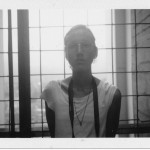 Biography
Biography
My project was born of death, the violence of my father’s era in the Medellín of 1991. The end of his life also annihilated part of my life, my history, my being, my ability to see. So I took my father’s camera to find a past, but to keep my present and connect with him through looking and through memory.
Project Statement Photography • Ethnography & Autoethnography • Narrative
Untitled
I was born at a time when the history of my country was all very confusing. Drug trafficking quickly took hold of the country and those who remained in the middle of the conflict were civilians, the workers.
My mother gave birth to the youngest of her three children at the end of the late eighties, during the national apocalypse, hell itself. The war between the boss of bosses, Pablo Escobar and the National Government, resulted in thousands of victims who had nothing to do with the interests of either. In Medellín alone, in 1991, 7,081 people were killed violently My father died in that war, in that year, when he honorably fulfilled is job responsibilities. Two gunmen on a motorcycle crossed him on their way to steal his car, and shot him in the heart. I was only three years old, and the image I was creating of him as a father, and as a person, was just becoming saved in my memory. He left, and I did not understand where he went, and much less why he had left me alone in a world so barren, without a memory, without a farewell. Violence is killing, it is being ripped away, it is disrespectful, is to end the life of not only the one who dies, but also the lives of those who remain.
I kept growing and the questions did not wait. “Mom, where’s my dad?” “In heaven,” she answered me, the dead go to heaven … “Our Father, which art in heaven,” I repeated, without understanding that my father had gone to these clouds, never again to return to this earth. But he never left me alone; my mom always told me he was always watching over me and caring for me from up there. So I grew up looking at the sky, hoping that his face would appear and would say something to me, like Mufasa when he appeared to Simba. That never happened. I kept growing, and now I understand that his language is the silence, and my company is the loneliness. So I communicate with him as I observe the sky over Medellin, sometimes clear and sometimes dark.
But my father is not only the sky, not only heaven. His earthly objects became my memory, became him. I appropriate these relics, and give them a new use. I wear his cycling shirts, ride his bike, write in his notebooks and finally, I have taken hold of his camera. I use it to save my memory, my travels and most importantly, to record these moments when I connect and I communicate with him through the sky.
I remember the first time I rode his bicycle—I saw my shadow, it was like watching his shadow. But this time it was not him, it was me riding the bike on which he had ridden many races, on which he had pedaled alongside Martín Emilio, “Cochise.” It was the same bike that lay lifeless for over 20 years, and is again moving through the streets of the city, running a new story, a new life.
Note by Tamera Marko: When VITA first read a draft of this in our translingual writing class a few months before this exhibit, nearly every student in the room had tears in their eyes, and said they too look at the sky above Medellín and think of their fathers, their uncles, their mothers, their sisters and brothers and more who have died in that era of violence. We looked around at each other, stunned. It was the first time each person in the room had articulated this out loud, which was really a kind of collective consciousness in this generation, unspoken, but no less real in their minds and hearts. It is not just the cemeteries in the ground then, that serve as a living memory of their dead. It is a spatial totality that extends into the infinite space of the sky, the heaven, itself. In this way, it seems that this generation experiences the city in extremes: a traumatic past that has marked their everyday lives since they were born, and a vision of a future yet to unfold, one in which they will live that their parents and grandparents cannot imagine. I believe we, all of us of all ages, need this generation and their past/present/future consciousness more than most people give them credit for.
Andrés Felipe Salas Carmona
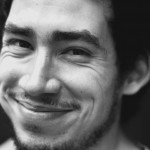 Biography
Biography
We must remain “unadapted.”
— Pat Perry
I am the son of a strong single mother who fought hard for her family and who, since I took my first steps, taught me to walk in the street. First was the block and a half which marked the territory of the park and its attractions. Later were the steps to school, which was about 15 minutes from my house. I kept growing and traveling with her in many places in Medellin. I remember when I was 10 years old, I accompanied her every Saturday to her work downtown. She worked in a shoe store. While she arranged the shoes, I turned on the TV and watched the morning cartoons. Time Warner, Power Rangers, The Pink Panther or some other magic formula entertained me until she ended work at 1 p.m. Every Saturday after lunch, we walked together down the Junín Street, along Ayacucho, the Oriental, and I looked at the toy booths while she bought a fruit for us to eat. I always ended up with something—a doll, a tattoo, a magic pencil or a sticker. The end of Saturday afternoon tour always ended in the Ley de la calle 50 with Junín Street to wait for the bus that would take us home. Today I am 28 years old, and though I have grown a bit, I’m still doing these tours. I keep visiting downtown on Saturday afternoons, I look at the toys in the stands, I hear the vendors selling their products. I stop to buy a tangerine. It’s a ritual I’ve been doing for a long time, and now I realize that somehow I keep walking my path along the steps that my mother once taught me. This is where my love of the individual and artful expression on buses, signs, and city walls first blossomed. It is my love and dedication to this that, in part, inspires my recent work as a statement about the homogenization and corporatization of public spaces in my city, and what people who are most affected by it think and feel about it.
Project Statement Photography • Ethnography & Autoethnography • Interviews • Graffiti
SALA DE EMERGENCIAS
EMERGENCY EXIT
“All of this is going to turn into trash sooner rather than later, all of this will cease to exist …
These cars [buses] are going out of circulation. I don’t know what will happen …
could it be that I will have to go plant coca? Because coffee no longer earns a cent.”
—Bus driver, Route Itagüi
“Es que todo esto lo van a volver chatarra, más temprano que tarde, todo esto va a dejar de existir…
Estos carros van a salir de circulación, yo no sé qué va a pasar…
será irme a sembrar coca porque el café ya no da un peso”
—Conductor de Bus Ruta Itagüi
In the city of Medellin in the 1990s, the tradition of decorating bus windows began, with stickers of different animated characters as Bugs Bunny, Tweety, or Tasmanian Devil; animals such as eagles, dogs and snakes; and saints such as the Divine Baby Jesus or the Virgin of Carmen. This popular type of graphic was something that filled me with fantasies, because I could feel accompanied by my favorite characters as I moved arm-in-arm with my mother through a city like Medellín that was so dense in this decade.
Today I am 28 years old, and the city’s development plan has begun to come to fruition in Medellín’s interurban public transportation, with new aesthetic regulations of the interiors and exteriors of buses. Now, it is no longer permitted to cover the windows with images because of rules that forbid visual contamination in this mode of transportation. This has pushed aside this tradition of autonomous expression of insignias in the city.
The importance of popular graphics is that they are generated within a category of legitimate cultural phenomena that does not come from businesses or graphic design studios, but rather from the ingenuity, the pulse, and the moonlighting street artisans, transforming the graphic into an invaluable document of everyday life. This is something that should be taken into account in the construction of identity in sectors of society, as it is the memory and identity of a territory that is not only written by institutions, nor only in books. It is written, rather, by people, day after day, in the streets, in their homes, in their places of work, on walls, in public restrooms, in transportation systems, in the food stalls and in the bustle of daily life.
By 2016, the city plans to replace many of the buses that are traditionally in the paths of the streets and avenues of the city with monochrome vehicles that resemble work cubicles more than the currently existing cozy place of work. This development proposes the homogenization of transportation, and as a result, there is also an implied aesthetic charge for the space of the street. This plan wants to turn this aesthetic into an alien space that is tasteless, without the substance and characteristics that human cargo gives every place in which we live.
No more buses with colorful curbs, with flashy, ornate signs, with photos of the driver’s children on the front panel, or with the stickers on the windows. The only authorized aesthetic elements will be the instructions and advertising for large businesses within a transportation system monopolized by the state that wants to put aside the aesthetic and cultural manifestations of an autonomous city.
Such problems have been approached from the standpoint of art in different parts of the world. Countries such as Mexico, India and Colombia have produced important documents around such street aesthetic manifestations. Projects and Sensational Mexican Design, Popular Luxury and Project Horn Please are some of my essential references, introducing me to the world of the popular picturesque. I am developing this project because I enjoy autonomous manifestations of human beings in public places, because I like the noise, aromas, textures and speed of the street. The large aesthetic wrapping that people give to the city mesmerizes me.
Medellín is a city I love to travel, to explore, to discover. It surprises me through everyday items that change the landscape, like a cartoon character stuck on the window of a bus, or when I look out the window of a bus to see a person selling fruit or a boy walking with his mother. I love that we all live together on one stage, that the city is not flat and has such things that lighten, distract, rejoice and give humor to life. Sometimes the simplest things around us are laden with deeper and more complex situations and meanings. So it is important to sharpen our gaze and occasionally make a record of our everyday memory, because everything tends to disappear and we forget without realizing it.
Susana Moncada Sánchez
 Project Statement Public Performance • Video • Photography • Autoethnography
Project Statement Public Performance • Video • Photography • Autoethnography
Yo Nací
Mis padres tuvieron el deseo de tener una hija, pero muchos problemas para lograrlo. Cuando al fin llegó el día tan esperado, el 16 de febrero de 1991 y mi mamá iba a dar a luz, estalló la bomba de la Macarena y el hospital más cercano era la clínica León XIII, donde me disponía a nacer. La mayor parte de heridos llegaron ahí, muchos murieron y yo nací.
Quiero ahora mostrar que efectivamente vivo, tal como lo hice el día en que nací.
El grito, es la union de la vida, la expresión, el sufrimiento y la muerte. Es lo que quiero resaltar. Ese día, al nacer, yo grite, mi madre gritó, los heridos gritaron y también lo hicieron las personas que murieron.
La ciudad gritó.
Hoy en este lugar, Medellín respira a través de mí. Volvemos a nacer bajo los escombros, con una dificultad que no nos debilita, si no que nos hace crecer mas fuertes.
La acción se desarrolla en tiempo real, por que entre nosotros no hay fronteras como el tiempo ni el espacio, ambos: usted y yo estamos vivos hoy y respiramos el mismo aire.
I Was Born
My parents wanted to have a daughter, but had many problems in making that wish come true. When the day they were long awaiting finally arrived, and my mom was about to give birth, a bomb exploded near the Plaza de Toros La Macarena, a bullfighting stadium. The nearest hospital was León XIII, where I was about to be born. Most of the wounded from the explosion arrived there. Many died and I was born.
Now I want to show people that indeed I am alive, just as I did the day I was born.
Screams are a mixture of life, expression, suffering and death. That is what I want to show. That day when I was born, I screamed, my mom giving birth screamed, the wounded in the bombing screamed and so did the people who were dying.
The city screamed.
Today, in this place, Medellin breathes through me. We return to the moment of being born under the rubble, with a difficulty that only makes us stronger.
The act of breathing is in real time so we are divided by neither space nor time. You and me both are alive today, breathing the same air.
Alejandro Castaño
Project Statement Sculpture
Dar la mano es un gesto que se convierte en la posibilidad de involucrar al otro en los sentimientos de quien la ofrece. Allí quedan guardados los paisajes y mundos de quien se atreve a recibirla.
—Juan Luis Mesa
Professor Asociado, Universidad Nacional de Colombia, Sede Medellín
Receiving another’s hand in one’s own is a gesture that creates the possibility of engaging with the feelings of the one who offers his or her hand. There, in this gesture, are landscapes and worlds of those who dare to receive it.
—Juan Luis Mesa
Associate Professor, Universidad Nacional de Colombia, Sede Medellín
Tamera Marko, Ph.D.
Director, Proyecto Boston-Medellín
 Biography
Biography
Tamera Marko specializes in what she calls the “theory, politics and practice of rhetorical mobility.” She does this through transnational translingual, multi-media community literacy research projects in the Americas (Spanish, Portuguese, English). She channels her work as an historian of Latin America and her 17 years of teaching writing to combine genres of new media, composition and historical memory to research and publish in the genre called for by each project. Marko’s academic, media, video and poetry publications explore youth and motherhood human rights projects. She also works on issues of gender, class and white privilege in the Americas.
Her work has been featured in academic journals, film festivals, galleries, theaters, and universities and on television in Medellin, Rio de Janeiro, Durham and Boston. For the last six years she has been working on theory and practice of transnational pedagogy she calls pedagogscapes. In an interview she recently said, “Reading books and lectures within the four walls of a classroom can be very meaningful. Books and Facebook can be tools for transnational communication, but they are not enough for profound changes in consciousness necessary for local-global justice. For this, we must also cross borders and know each other face to face.” She is especially concerned with negotiating rhetorical situations and writing necessary for storyteller and her story to cross borders. Tamera collaborates storytellers who, for various reasons of inequitable geopolitical, economic, race and gender power relations, have the least access to rhetorical mobility.
Over the last seven years, she has founded and co-directs three interrelated rhetorical mobility projects in collaboration with Emerson College, MIT, Duke University, and the Universidad Nacional de Colombia in Medellín. She co-directs these projects with Medellín native Jota Samper, an architect, urban planner and artist at MIT. (1) medellín mi hogar / my home medellín, is an alternative feminist video and photographic archive with more than 750 women and their families displaced by violence in Colombia. Through their family albums, women
tell their stories about how they built their own homes and neighborhoods in Medellín. (2) This video archive emerged from her Duke University civic engagement program called DukeEngage Colombia. (3) Since 2009, Proyecto Boston Medellín (PBM) has grown to involve 300 Emerson, Duke and Universidad Nacional de Colombia students, faculty and staff working across three cities through new social media to bring a total of 18 young emerging artists and two established artists and faculty from Medellín to exhibit their work at Emerson College, MIT, Roxbury Community College, Duke University and the Universidad Nacional de Colombia in Medellin. The exhibits include 500 photographs and 37 videos, paintings, sculptures, television scripts and public performances.
Before academia, Tamera was a journalist covering human rights in Africa, Asia, Latin America and the United States. She is currently Director of the First Year Writing Program at Emerson College in Boston and a Faculty Affiliate at Duke University and at the Universidad Nacional de Colombia in Medellín. She teaches transnational translingual research writing courses in English, Spanish and Portuguese. She has a bachelor’s degree in journalism, a master’s degree in Latin American Studies and Communications and a Ph.D. in Latin American History with an emphasis on Women’s Studies and Race and Ethnic Studies.
Jota Samper, M.A.
Advisor, Proyecto Boston-Medellín / Ph.D. Candidate, MIT Department of Urban Studies and Planning Urban Planner
 Biography
Biography
Jota (José) Samper has been working as an architect and artist for more than 13 years and has been teaching architecture and urban design. He was born and raised in Medellín. He studied architecture at the Universidad Nacional de Colombia in Medellín. Since then, he has done art, architectural, urban and civic engagement projects in six countries: Colombia, Panama, the United States, Mexico, India and France. His work has won more than 5 national and international awards, including the Progressive Architecture Award two times. His work, as part of “Small Scale, Big Change: Architectures of Social Engagement” was on exhibit at the 2011 MoMA.
He has a Master’s Degree from the MIT Department of Urban Studies and Planning, where he is now a Ph.D. Candidate and a Presidential Fellow. His research seeks to understand if policies and practices that have both political and physical implications in the urban context are directly related with the reduction of violence (number of homicides) in Medellin during the 2003-2007 period. The main objective of this research project is to explore the real success or failure of these policies implemented in the city of Medellin, in a search to find successful strategies that can be implemented in other city/region/nation contexts around the world that are going through similar manifestations of socio political conflict and violence.
He is a co-founder (since 2007) of DukeEngage Medellin, Colombia, a civic engagement in which students from Duke University, along with architects, planners and historians help communities to archive their memories in their own words and images.
Luis Eduardo Serna
Associate Professor at the Universidad Nacional de Colombia, Medellín Writer and Executive Producer at 4B1D Creative Group
 Biography
Biography
Since I was 16 years old, I have been working in the audiovisual environment. Starting as an animator making in-betweens in traditional animation projects gave me a glimpse into how narrative works with audiences. Situated in the artistic field and in the theoretical field, my main research project has been to build an expanded experience through telling a story. This way of working gives me the opportunity to write and produce for television. It also gives me the understanding that the effectiveness of a story is not just in its construction and structure, but it is also in the way that people get involved, they way they embrace (or not) the story, not as a final product, but rather as a process of saying something.
As an artist, I have shown my work in the most important Museums and Art Galleries in Colombia, including events such as the Biennial of Art at Bogotá at the MAMBO, the Medellín Biennial at the Museu de Arte Moderno de Medellín, The Young Artist Exhibition at the Santa Fé Gallery, and with other collective exhibitions at the Biblioteca Luis Angel Arango, and the Cámara de Comercio de Medellín.
Work in Progress
As a writer and producer I am working with projects like Guns N’R4, a road movie project lead by 4B1D Creative Group and The Allegiance Theater. In the Transmedia project Teoría de la Manada (The Pack Theory), a concept that includes various web series, a television series and some editorial products that talk about how the relationships between men and women depend on a mixture of chaos and stupidity. This project is built with more than five companies in Medellín and three in Barcelona, Spain.
As a teacher, I am working at the Universidad Nacional de Colombia in Medellín in the undergraduate program of Fine Arts and the Master’s Program of Visual Arts. In both, I teach constructing narrative into a Fine Arts Project and how this can transcend rhetoric through developing different experiences with works of art. At the Universidad de Antioquia’s Communications Program, I also teach the development of stories for television projects.
Juan Luis Mesa S.
Associate Professor at the Universidad Nacional de Colombia, Medellín
Master’s in Sculpture / Sculptor / Researcher
 Biography
Biography
Juan Luis Mesa has worked as a professor in the School of Arts at the Universidad Nacional de Colombia in Medellín for 20 years, which has allowed him to develop, in parallel ways, his work as an artist, a teacher and a researcher. He has been especially interested in the relationship between object, space and the city as well as the teaching of sculpture.
He studied art in Medellin and then was awarded a scholarship by the Organization of American States to pursue a Masters degree in Sculpture at the National Autonomous University of Mexico (UNAM) between 1988 and 1991. His thesis focused on the analysis of the relationship between art and craft, based on the type of sculptural work he did at the time from utilizing artisanal crafts or artisanal materials as “ready mades.”
He became a professor at the Universidad Nacional de Colombia in Medellin in 1993. He has since combined his teaching with several academic posts, including Director of the School of Arts, Director of the Arts Curriculum, and Academic Coordinator of the Master’s of Fine Arts. He has been focused on the teaching of sculpture with an emphasis on the notion of sculptural object, the relationship between object and space and between art and public space. He is also part of the Arts Research Group (Grupo de Investigación en Artes) with which he has participated in several university supported research projects that have allowed him to deepen his work. Since 2005, he has been part of a group of professors from the School of Arts, which promoted the implementation and opening of the Masters of Visual Arts. Since 2009, he has been a professor in the program, promoting research work around objects, spaces, places and interventions.
He is currently starting a new research project on the teaching of sculpture in Colombia. He seeks with this project to build networks with universities that promote pedagogy through boom (auge) and audiovisual media.
As an artist, he has been exhibiting his work since 1982. He has received several awards, including the First Biennial of Art in Bogotá in 1988, the Regional Hall of Artists in 1997 and an honorable mention in the Salón Nacional de Artistas in 1998. He was chosen to participate in the exhibition “Art Installation in Antioquia,” which will be held in November 2013 at the Museum of Modern Art of Medellin. He has published several articles about his practice, theory and pedagogy of sculpture, including “Narratives on Urban Art,” published in the book Experiences, Talk, Stories, Narrative and Speeches on the City. Medellín 1975-2001.
Miguel Rojas-Sotelo
PBMD13 Curator / Special Events Coordinator & NC Latin American Film Festival Director, Duke University Center for Latin American & Caribbean Studies
 Miguel Rojas-Sotelo is an art historian, visual artist, activist, scholar, and curator. Holds a Doctorate (Ph.D.) in visual studies, contemporary art, and cultural theory at the University of Pittsburgh (2009).
Miguel Rojas-Sotelo is an art historian, visual artist, activist, scholar, and curator. Holds a Doctorate (Ph.D.) in visual studies, contemporary art, and cultural theory at the University of Pittsburgh (2009).
Miguel worked as visual arts director of the Ministry of Culture of Colombia (1995-2001) and independently as artist, curator, and critic ever since. His areas of interest are: decolonial aesthetics, subaltern studies, the global south, contemporary visual circuits, culture and power, Latin American visual production, cultural politics and subjectivity, performance and film studies. Currently works and teaches at the Center for Latin American and Caribbean Studies at Duke University is the Director of the NC Latin American Film and New Media Festival.
Suzanne Hinton
Director, Service Learning & Community Action, Emerson College
 Suzanne Hinton is a New Hampshire native and longtime Jamaica Plain and Roxbury resident, who earned philosophy degrees from Drexel University, and The University of Tennessee. As an Assistant Professor of Philosophy at Bentley University in Waltham, MA, she taught gender studies and ethics courses, and intensive classes for first-generation students. She also spent a semester in the Kingdom of Bahrain teaching a social and political philosophy college course for Bahraini students. In addition to designing and facilitating diversity retreats for Bentley faculty, staff and students, Hinton managed the Gender Issues Council, and helped found the Sexual Orientation Action Team and the student-led Women’s Center. At Emerson, Hinton runs the Office of Service Learning and Community Action, through which she helps faculty integrate service learning pedagogy into the curriculum. She sits on the Sustainability Committee, serves alongside students through the Alternative Spring Break Program, and for the last five years has been founding collaborator of transnational multimedia art exhibits through Proyecto Boston Medellín (PBM). Hinton teaches Communities and Race Relations, Sociology of Everyday Life and Action for Community Transformation.
Suzanne Hinton is a New Hampshire native and longtime Jamaica Plain and Roxbury resident, who earned philosophy degrees from Drexel University, and The University of Tennessee. As an Assistant Professor of Philosophy at Bentley University in Waltham, MA, she taught gender studies and ethics courses, and intensive classes for first-generation students. She also spent a semester in the Kingdom of Bahrain teaching a social and political philosophy college course for Bahraini students. In addition to designing and facilitating diversity retreats for Bentley faculty, staff and students, Hinton managed the Gender Issues Council, and helped found the Sexual Orientation Action Team and the student-led Women’s Center. At Emerson, Hinton runs the Office of Service Learning and Community Action, through which she helps faculty integrate service learning pedagogy into the curriculum. She sits on the Sustainability Committee, serves alongside students through the Alternative Spring Break Program, and for the last five years has been founding collaborator of transnational multimedia art exhibits through Proyecto Boston Medellín (PBM). Hinton teaches Communities and Race Relations, Sociology of Everyday Life and Action for Community Transformation.
Edgar Arroyo Castro
Dean and Professor, Department of Architecture & Art Universidad Nacional de Colombia in Medellín
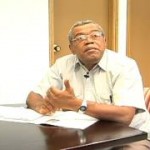 Professor Edgar Arroyo Castro is the Dean of the Department of Architecture and Art at the Universidad Nacional de Colombia in Medellín. He is originally from Buena Ventura, a port city on the Pacific Ocean in the Valle del Cauca in Colombia. Before coming to Medellín, Dean Arroyo founded and directed university research institutes and cultural centers in Buena Ventura and the surrounding region, where the population is predominantly from diverse Afro-Colombian communities and indigenous tribes. Given that Colombia is the world’s most bio-diverse country and for the last sixty years has experienced environmental degradation of its tropical regions and water sources, his work with people intersects with environmental issues. He also has worked with international research groups in Latin America, India, Africa and Europe. For 45 years, Professor Arroyo has been dedicated to research, pedagogy and cultural collaborations between academics and community members. He focuses on increasing access for Afro-Colombians, women and all Colombians of color to healthcare, education, housing, employment and the means to self-define, sustain and represent diverse cultures and ways of life.
Professor Edgar Arroyo Castro is the Dean of the Department of Architecture and Art at the Universidad Nacional de Colombia in Medellín. He is originally from Buena Ventura, a port city on the Pacific Ocean in the Valle del Cauca in Colombia. Before coming to Medellín, Dean Arroyo founded and directed university research institutes and cultural centers in Buena Ventura and the surrounding region, where the population is predominantly from diverse Afro-Colombian communities and indigenous tribes. Given that Colombia is the world’s most bio-diverse country and for the last sixty years has experienced environmental degradation of its tropical regions and water sources, his work with people intersects with environmental issues. He also has worked with international research groups in Latin America, India, Africa and Europe. For 45 years, Professor Arroyo has been dedicated to research, pedagogy and cultural collaborations between academics and community members. He focuses on increasing access for Afro-Colombians, women and all Colombians of color to healthcare, education, housing, employment and the means to self-define, sustain and represent diverse cultures and ways of life.
He has published two books: A Study in The Improvement of Settlements Located in the Watershed of the Yesca Creek / Estudio de mejoramiento de los asentamientos localizados en la microcuenca de la quebrada la yesca and Planning: Tools for Preventing Disasters?” / La planifación: herramienta preventiva en DESASTRES?” He published a groundbreaking article “The paradoxes of development in the Pacific Ocean Region of Buena Ventura: a port without city, a city without a region.” / “Las parádojas del desarrollo en el pacífico Buena Ventura, un puerto sin ciudad, una ciudad sin region.” He has produced documentary video on these subjects and regions, including “Guayaquil” and “La Yesca.” At the Universidad Nacional de Colombia, he has been Director of the School of Representational Media; Director of the Office of Popular Community Housing and Urban Communities (Hábitat Popular CEHAP) and Director of the Architecture Program. Professor Arroyo also is a salsa scholar and has his own Saturday radio show—Oye como suena / Listen To How This Sounds—dedicated to keeping music with African roots throughout the diaspora in circulation in Colombia and throughout the Americas.
Through an Emerson College Presidential Curricular Innovation Fund Grant, matched by funds from the Universidad Nacional de Colombia, Dr. Tamera Marko and Dean Arroyo are collaborating on deepening their last four years of university-community collaborations between more than 300 students, faculty and staff at Emerson College in Boston and the Universidad Nacional de Colombia in Medellín. We integrate publications, pedagogies and practices of writing with those of the arts, communications, architecture and urban planning in real-world, real-time issues that represent some of our world’s most pressing local and global 21st-century problems.
4-minute interview with Dean Arroyo & the Universidad Nacional de Colombia in Medellín: http://www.youtube.com/watch?v=t8xvYrtWF_o
Ryan Catalani
Assistant Director, Proyecto Boston-Medellín
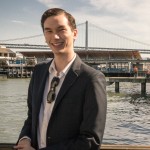 Ryan Catalani is a junior visual and media arts major at Emerson College. Since 2011, he has worked closely with Dr. Tamera Marko on Proyecto Boston Medellín (PBM), assisting with multimedia transnational, translingual exhibitions, and the video and photographic archive medellín mi hogar / my home medellín, a collaboration with 750 displaced women and their families in Medellín. Ryan also designed the website for these projects: mobility17.ryancatalani.com. He travelled to Colombia for the past two years to collaborate with community-university teams to produce PBM and medellín mi hogar documentaries. He is the Global Citizenship Coordinator at Emerson’s Office of Service Learning and Community Action, and works at the Berkeley Beacon, the college’s student-run newspaper, as the managing editor and design director. He founded Junction, a monthly cross-disciplinary showcase for creative work at Emerson, and cofounded Bookzingo, a new way for college students to buy and sell textbooks.
Ryan Catalani is a junior visual and media arts major at Emerson College. Since 2011, he has worked closely with Dr. Tamera Marko on Proyecto Boston Medellín (PBM), assisting with multimedia transnational, translingual exhibitions, and the video and photographic archive medellín mi hogar / my home medellín, a collaboration with 750 displaced women and their families in Medellín. Ryan also designed the website for these projects: mobility17.ryancatalani.com. He travelled to Colombia for the past two years to collaborate with community-university teams to produce PBM and medellín mi hogar documentaries. He is the Global Citizenship Coordinator at Emerson’s Office of Service Learning and Community Action, and works at the Berkeley Beacon, the college’s student-run newspaper, as the managing editor and design director. He founded Junction, a monthly cross-disciplinary showcase for creative work at Emerson, and cofounded Bookzingo, a new way for college students to buy and sell textbooks.
Vaibhav Penukonda
Student Director, The Duke Colloquium
 Vaibhav Penukonda, commonly known as Vaib, is a sophomore from Fort Myers, FL. Deviating from the traditional Trinity education, he is actively pursuing a Program 2 alternative major that mediates the connections between global health, spacial theory, and built environment. Beyond this area of study, Vaib has found himself most passionate about Latin American studies at Duke. After taking numerous Latin America-focused courses his freshman year, he participated in Duke Engage Colombia where his team and he worked to document video narratives of displacement in Medellín, Colombia as a result of ongoing warfare. One of the more intriguing parts of his experience was the nature of retelling his time spent in Colombia, as his stories and perspective had the power to change multiple viewpoints on the idea of 21st century Colombia. This engagement and reflection on time spent in Colombia has driven Vaib to support this particular colloquium project. Outside of academics, Vaib enjoys fostering community, whether through participating in Duke’s Fusion dance team Dhoom, living with his selective living group Mirecourt, having an active role in the 2013 Awaaz South Asian Cultural Show, or working with Sophomore Class Council. Overall, Vaib is excited for the potential impact this Colloquium series can have on the mindsets of Duke students who are discussing the pertinent issues of Latin America, civic engagement, or art in general.
Vaibhav Penukonda, commonly known as Vaib, is a sophomore from Fort Myers, FL. Deviating from the traditional Trinity education, he is actively pursuing a Program 2 alternative major that mediates the connections between global health, spacial theory, and built environment. Beyond this area of study, Vaib has found himself most passionate about Latin American studies at Duke. After taking numerous Latin America-focused courses his freshman year, he participated in Duke Engage Colombia where his team and he worked to document video narratives of displacement in Medellín, Colombia as a result of ongoing warfare. One of the more intriguing parts of his experience was the nature of retelling his time spent in Colombia, as his stories and perspective had the power to change multiple viewpoints on the idea of 21st century Colombia. This engagement and reflection on time spent in Colombia has driven Vaib to support this particular colloquium project. Outside of academics, Vaib enjoys fostering community, whether through participating in Duke’s Fusion dance team Dhoom, living with his selective living group Mirecourt, having an active role in the 2013 Awaaz South Asian Cultural Show, or working with Sophomore Class Council. Overall, Vaib is excited for the potential impact this Colloquium series can have on the mindsets of Duke students who are discussing the pertinent issues of Latin America, civic engagement, or art in general.
Gayle Powell
Student Director, The Duke Colloquium
 Gayle Powell is a sophomore Baldwin Scholar from Easton, Connecticut studying public policy and pursing a certificate in Child and Family Policy. On campus, she is on the executive board of Duke Dance Marathon and is a member of Business Oriented Women. She is also a member of Team Kenan, the student-led branch of the Kenan Institute of Ethics, which plans events to engage students in ethical dialogue outside of the classroom. In addition, she writes for Encompass and Passport magazines and serves as a tour guide for prospective undergraduate students. After her Duke Engage experience in Dublin this past summer she has become especially interested in the field of education. Gayle is currently a part of Professor Darity’s independent research team studying the racial achievement gap in public schools. Next semester she plans to participate in Duke Immerse South Africa studying the civil rights movement in comparison to Apartheid. A self-proclaimed travel junkie, she also plans to study abroad in Chile with a program titled “Comparative Education and Social Change” first semester of her junior year. At Duke, she loves running, hanging out with friends, and most importantly the number of Ben and Jerry’s flavors at the Lobby Shop. Gayle is unsure of where life will take her after Duke, but she would love to be involved in education or immigration policy.
Gayle Powell is a sophomore Baldwin Scholar from Easton, Connecticut studying public policy and pursing a certificate in Child and Family Policy. On campus, she is on the executive board of Duke Dance Marathon and is a member of Business Oriented Women. She is also a member of Team Kenan, the student-led branch of the Kenan Institute of Ethics, which plans events to engage students in ethical dialogue outside of the classroom. In addition, she writes for Encompass and Passport magazines and serves as a tour guide for prospective undergraduate students. After her Duke Engage experience in Dublin this past summer she has become especially interested in the field of education. Gayle is currently a part of Professor Darity’s independent research team studying the racial achievement gap in public schools. Next semester she plans to participate in Duke Immerse South Africa studying the civil rights movement in comparison to Apartheid. A self-proclaimed travel junkie, she also plans to study abroad in Chile with a program titled “Comparative Education and Social Change” first semester of her junior year. At Duke, she loves running, hanging out with friends, and most importantly the number of Ben and Jerry’s flavors at the Lobby Shop. Gayle is unsure of where life will take her after Duke, but she would love to be involved in education or immigration policy.
Bailey Sincox
Student Director, The Duke Colloquium
 Bailey Sincox is a junior studying English and Theater Studies at Duke University. During her childhood in Houston, TX, Bailey developed a love for both English and Spanish as they were used in her community. She participated in the DukeEngage Colombia program in Medellín in the summer of 2013. Inspired by the impact of Proyecto Boston-Medellín, Bailey proposed for the venture to extend to her home university of Duke. She is interested in art’s ability to inform those otherwise separated by language, culture, or geography.
Bailey Sincox is a junior studying English and Theater Studies at Duke University. During her childhood in Houston, TX, Bailey developed a love for both English and Spanish as they were used in her community. She participated in the DukeEngage Colombia program in Medellín in the summer of 2013. Inspired by the impact of Proyecto Boston-Medellín, Bailey proposed for the venture to extend to her home university of Duke. She is interested in art’s ability to inform those otherwise separated by language, culture, or geography.
Bailey is Student Director of the Arts in the Civic Life thematic with The Duke Colloquium. She hopes to return to work on the “Medellín, mi hogar” project in Medellín in the summer of 2014.